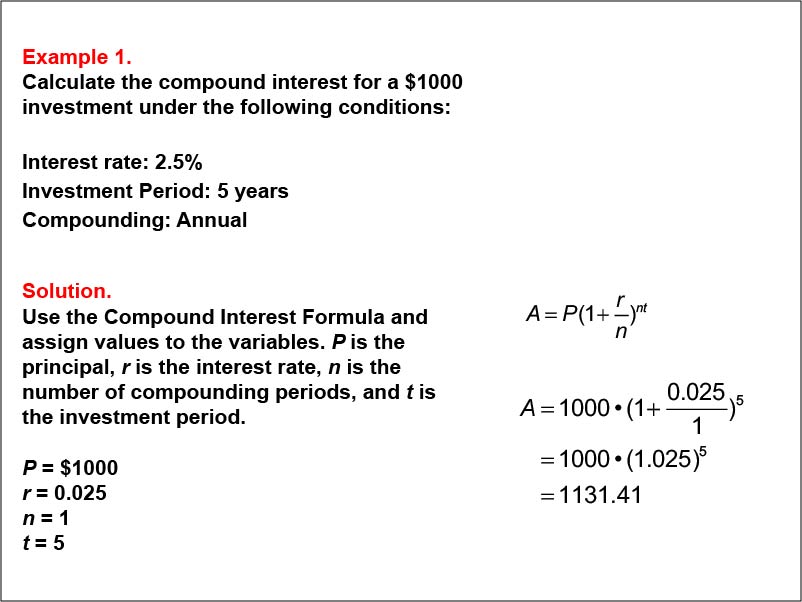
Display Title
Math Example--Math of Money--Compound Interest: Example 1
Display Title
Math Example--Math of Money--Compound Interest: Example 1

Topic
Math of Money
Description
This example demonstrates compound interest calculation for a $1000 investment at a 2.5% interest rate over 5 years, compounded annually. Using the formula A = P(1 + r/n)nt, where P is the principal amount, r is the interest rate, n is the number of times interest is compounded per year, and t is the number of years, the final amount is calculated to be $1131.41.
Compound interest is a fundamental concept in finance and mathematics. It illustrates how investments grow over time when interest is reinvested. This collection of examples helps teach the topic by presenting various scenarios with different compounding frequencies, allowing students to compare and contrast the effects on the final amount.
Seeing multiple worked-out examples is crucial for students to fully grasp the concept of compound interest. Each example reinforces the application of the formula while demonstrating how changing variables affects the outcome. This repetition helps solidify understanding and improves students' ability to apply the concept to real-world financial situations.
Teacher Script: "Today, we're going to explore how your money can grow through compound interest. Let's start with a simple example of annual compounding and see how a $1000 investment can increase over five years. Pay attention to how we use the formula and how each part represents a real-world factor in our investment."
For a complete collection of math examples related to Compound Interest click on this link: Math Examples: Compound Interest Collection.
| Common Core Standards | CCSS.MATH.CONTENT.7.RP.A.3, CCSS.MATH.CONTENT.HSF.LE.A.1, CCSS.MATH.CONTENT.HSF.IF.C.8.B |
|---|---|
| Grade Range | 8 - 12 |
| Curriculum Nodes |
Algebra • Exponential and Logarithmic Functions • Compound Interest |
| Copyright Year | 2013 |
| Keywords | interest, compound interest, math of money |